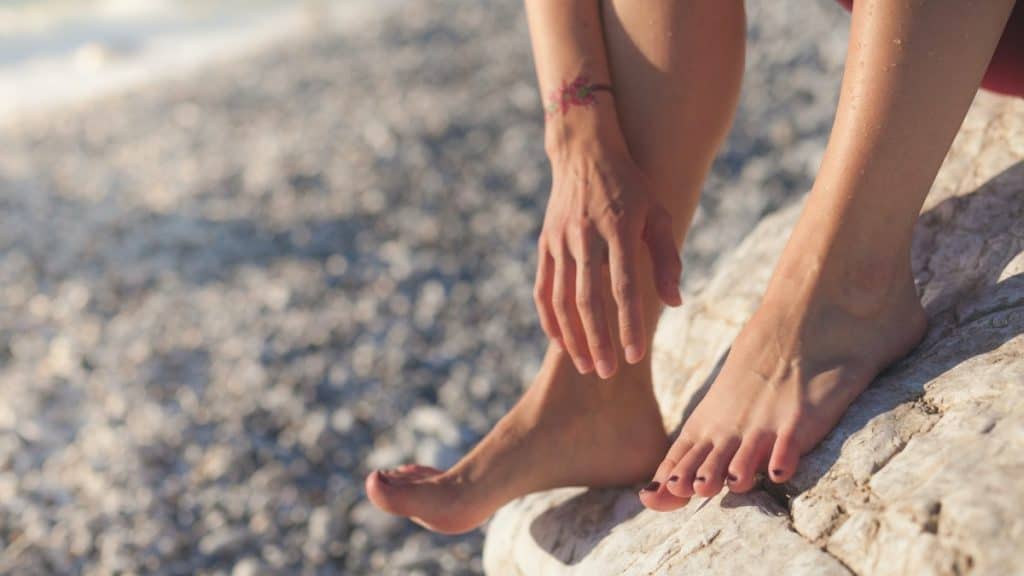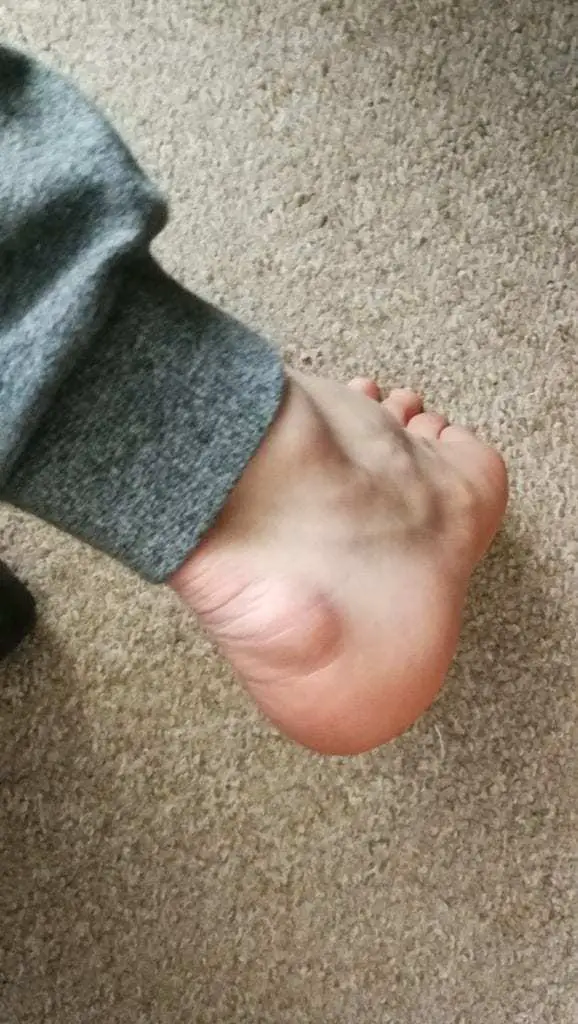
Whether you are a beginner or are a veteran climber, having sore feet and neglected shoes can prevent you from enjoying your favorite sport. Even if you do not experience any pain or injury, caring for your feet is a necessary precautionary measure you must take.
As you ponder about how your next climbing adventure will be, many questions will be lingering in your mind; what are common foot injuries you are likely to sustain when rock climbing? How do you address feet problems from climbing? The answers to these questions depend on how you care for your feet. Read on to get an insight into what you can do to ensure your feet stay healthy for a successful rock climbing performance.
So how do you care for your feet after you’ve been rock climbing? After climbing, you should clean and moisturize your feet using water and a towel. Alternatively, you can use a pumice stone to get rid of dead skin cells on your heels, toes, and in between your toes. Doing this not only prevents your feet from scarring and blisters, but it also restores your feet’s wellbeing.
Always use the RICE method if you have an injury: Rest your injury, Ice your injury, Compress your injury to reduce the swelling, Elevate your injured foot above your heart. Sore and injured feet due to rock climbing can also be treated with a massage and/or foam rolling.
Read on for more information. Alternatively, you can jump using the links below to a subheading.
Page Jumps
- Common Injuries Caused by Wearing Tight Climbing Shoes
- How to Reduce the Chance of Getting Foot Problems from Climbing
- How to Care for Your Toenails
- Washing Your Feet to Keep Them Clean
- What You Can do Pre and Post Climb to Reduce the Chance of Foot Injury
Common Injuries Caused by Wearing Tight Climbing Shoes
Foot pain is a common experience for all types of climbers regardless of the high-performance shoes they may be wearing. Also, climbers are obsessed with wearing tight and bendy shoes, hoping their climbing experiences will get better with time. However, mild toe pain may disappear within a few hours, but it may fail to get better when you do not take precautionary measures. Here are some of the injuries you are likely to sustain after rock climbing:
- Chronic swelling and stiffness in toes
Your feet and hands are the most used parts of your body during rock climbing. Not only do they hold your weight when climbing, but they also press against the rocks to propel you to greater heights. When tension builds up around them, chronic swelling is likely to occur. This condition may lead to osteoarthritis that can permanently cramp your climbing performance.
- Achilles Tendinitis and ankle sprains
When you’re wearing the wrong shoe size, your foot will be forced to conform to it. This interferes with the biomechanical positioning of the foot within the shoe. Your medial column of the foot will also be affected. Your foot becomes prone to Achilles Tendinitis and ankle sprains when you wear the tight-fitting shoes for longer periods.
- Bunions Deformity or Hallux Valgus

Bunions occur when your big toe becomes laterally deviated as a result of wearing tight and narrow shoes. This may lead to the formation of a bony lump inside the great toe joint. Bunions become a nightmare for climbers such that only an orthopedic butcher can clean them up using a chisel. I actually have a bunion myself from wearing tight climbing shoes earlier on in my climbing journey.
- Pitted Keratosis, Sesmoiditus, Hammertoes, and Metatarsalgia
Wearing tight climbing shoes often comes with catastrophic experiences, including corns, pitted keratosis, sesmoiditus, hammertoes, and metatarsalgia, among others. The repetitive activity and limited breaks in between cause strain on joints and toes and causes abnormal mechanical stresses on the feet.
- Dead, dry, and flaking skin
No matter how hard you try to moisturize your feet before climbing, the skin cells eventually dry up and become dead. Wearing tight shoes makes it even worse because they don’t allow your feet to breathe as they should.
How to Reduce the Chance of Getting Foot Problems from Climbing
Naturally, rock climbers tend to choose tight-fitting shoes hoping they will stretch with time. As expected, the feet will conform to the shoe’s design and structure. But in the long run, your feet may develop irreversible problems, which may be costly to correct. To reduce the chance of getting foot problems, consider these simple tips:
- Shop for the right shoe-size
Forget about what veteran climbers will tell you about tight shoes. Get a shoe fitter to determine your size, depending on the summit you are going to climb. The type of material used to make the shoe will also play a role in determining your comfort. Here’s an article I’ve written which gives you a tip you’ve probably never heard before about shopping for climbing shoes while getting the right size.
- Practice warm-ups before rock climbing
If you have taken a long break from climbing, going for warm-ups will groom your feet to adjust to the climbing activity. If possible, go for massages and feet stretching exercises. That way, getting foot blisters as a result of excessive friction between your sock and skin will be a thing of the past.
- Use toe hooks and heel hooks when climbing
How you place your feet when rock climbing determines whether you will have foot problems or not. Use pull methods with your feet where you can rather than pushing to exert more energy for your arms. Make use of your legs to initiate the movement and go for an upward motion to enhance your climbing performance.
How to Care for Your Toenails
Your toenails are likely to become affected by wearing tight shoe sizes during rock climbing. Your nails may either thicken, become brittle, or become displaced from the nail bed. The constant pressure of tight shoes and poor nail care can cause ingrown toenails. Some climbers may also catch a fungal nail infection because they are exposed to warm, dark and moist environments. I’ve written a whole article about caring for fingernails and toenails before, after and while you climb which goes into a lot of detail. Here’s a few tips to help you here:
a. Pedicure
Whether you are male or a female rock climber, going for a pedicure is a surefire way of ensuring your toenails stay in great shape for your next climbing adventure. The process involves using special nail care products that are used to remove a potential fungal attack and to keep your toenails in great shape.
b. Basic hygiene
If you are unable to afford pedicure services or do not have time to visit one, practicing basic hygiene will come in handy. As you shower, use a pumice stone to get rid of dead skin on your heels and in between toenails. Long nails become brittle at some points, so it is advisable to cut them off. If there are any cracks in your toenails, you can apply lotion daily and wear soft socks.
c. Your diet
Some common toenail conditions can be prevented through a healthy diet. Food that contains natural gelatin-like Jello and fruit snacks contribute to the healthy growth of nails. Alternatively, you can get supplements to restore the health of your nails.
Washing Your Feet to Keep Them Clean
Unclean feet can cause potential foot problems for you as a climber. While soap and water are the main things to help you wash your feet, they may not eliminate potential problems like corns and fungal attacks. You still need a pumice stone for scrubbing to get rid of any dead skin cells and other ingredients such as vinegar, creams and lotions. Your toenails also harbor a lot of germs, which is why you should use clippers to cut or trim them. After cleaning them, dry your feet using a towel and wear open sandals to let them breathe.
What You Can do Pre and Post Climb to Reduce the Chance of Foot Injury
Foot care after climbing is essential regardless of the summit you plan on climbing. When you neglect your feet or shoes, you will get more injuries, which may inhibit your climbing performance. Here are some tips to help you care for your feet to prevent the chance of blisters and other foot problems:
Pre-climbing measures
The type of shoes you choose to wear greatly determines your climbing performance. Before you make your purchasing decision, consult a reputable shoe fitter that offers expert advice. It becomes tricky when you are not used to tight shoes. Look for shoes that are neither too loose nor too tight.
An experienced shoe fitter should tell you about the materials that each shoe is made from and how far the shoe can stretch. Materials such as leather are more elastic compared to synthetic ones. It all depends on how much rubber is used to cover it. If you are a beginner, it is best to buy flat lasted shoes with a fairly supportive rubber coating. That way, your feet will not feel the pressure from rock climbing.
Post-Climbing Measures
How your feet behave after rock climbing best describes whether they have sustained an injury or have become safe.
If you have an injury, the best thing to do is to adopt the RICE concept; Rest, Ice, Compress and Elevate. Get some rest until the injury subsides. Do not even think about climbing when you have an injury. Now place ice packs up to 30 minutes to reduce the inflammation. Using a towel, compress the injured part to reduce the swelling. Finally, elevate it above your heart. Other methods that are known to prevent foot injuries include deep tissue massages and foam rolling. Though they can be painful, they will help ease your muscle fatigue.
Whether you are into recreational or competitive rock climbing, caring for your feet is an essential skill you must become accustomed to. Foot injuries are common and you need to groom your feet for each climbing experience to minimize the risk. Remember, how rock climbing affects feet will be the least of your worries if you pay attention to everything you have read in this article.
